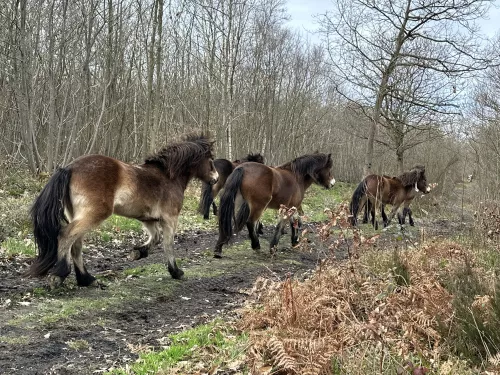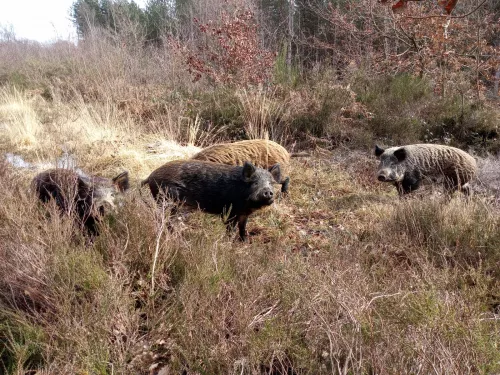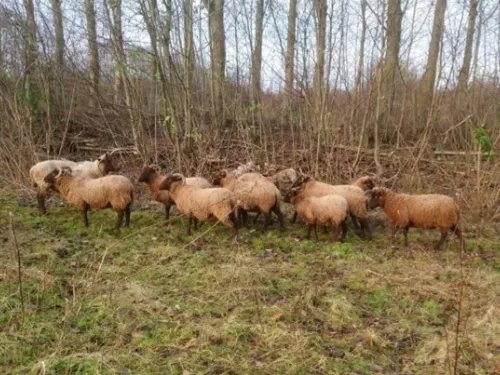
Exmoor ponies
Find out about Exmoor ponies and why we use them in conservation.

Longhorn cattle can be many colours but they are almost always brindle (splattered/stripey) with a white line down the spine. They have long backs and can have very impressive horns.
Originally a very slow, heavy draft animal, longhorn cattle have a placid temperament and meander through reserves in a bulldozer-like fashion, using their weight and horns to break through dense vegetation. This helps to diversify single-age scrub and vast bramble blocks.
Long-living and happy to eat a wide variety of woody vegetation, longhorn cattle are one of the bigger native breeds. Bulls can be up to 1000kgs, taking a long time to become fully mature, and the species as a whole requires more food than some smaller breeds in order to support its size.
Longhorn cattle have joined European bison, Exmoor ponies and Iron-Age pigs at West Blean and Thornden Woods, as part of our groundbreaking Wilder Blean project. Find out more about these species and the project below:

Find out about Exmoor ponies and why we use them in conservation.

These pigs are as close as you can get to the wild boar and also, despite being a domesticated version of this wild species, share many of its traits.

A striking unusual milky coffee coloured-sheep, often with four horns and sometimes as many as six. This primitive breed is originally from the Isle of Man. Their fleece self-sheds but they can also be shorn.